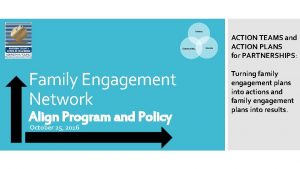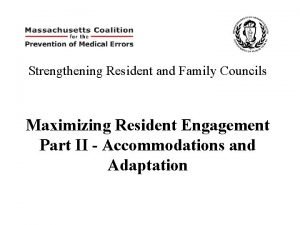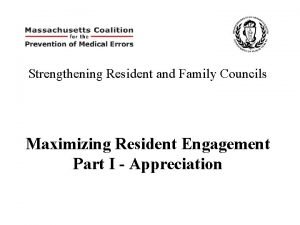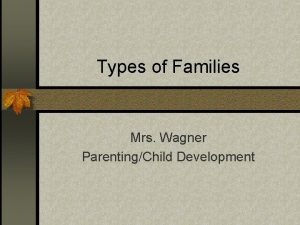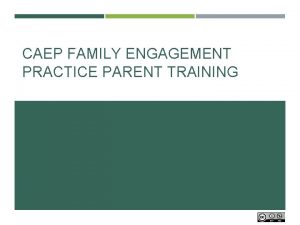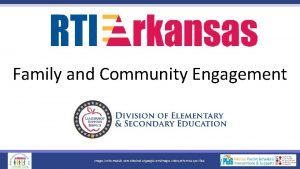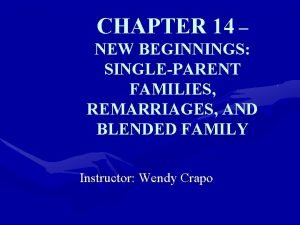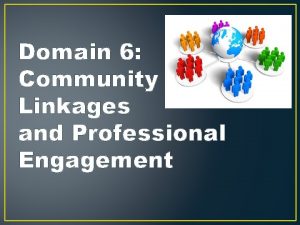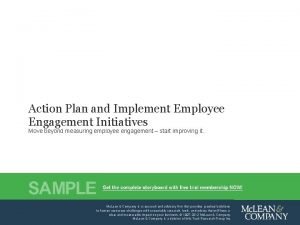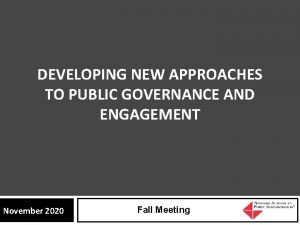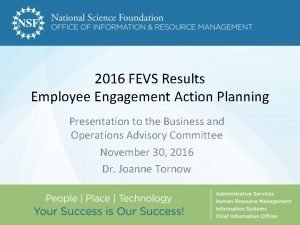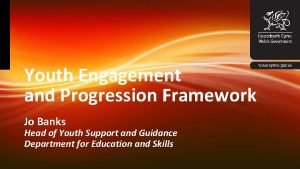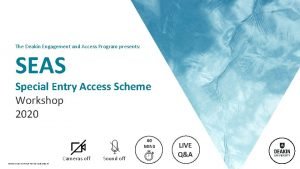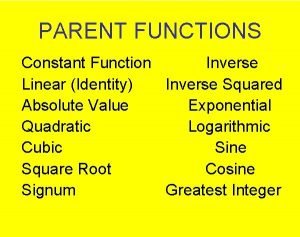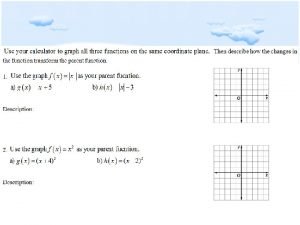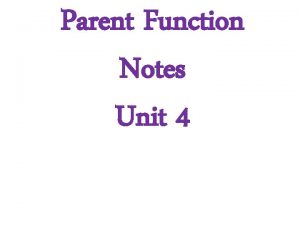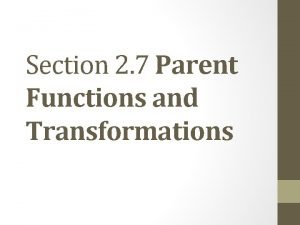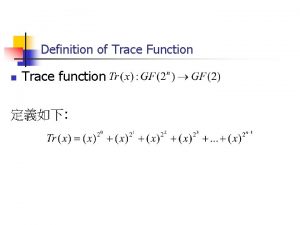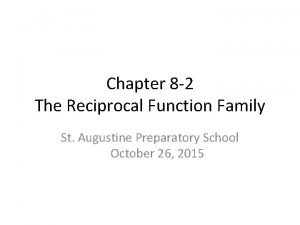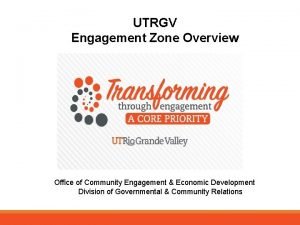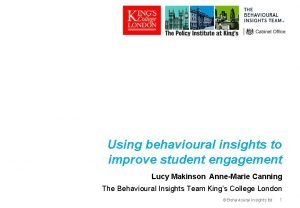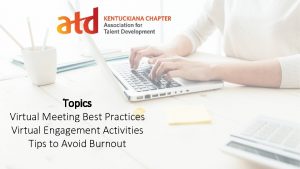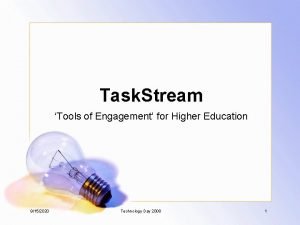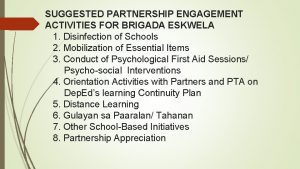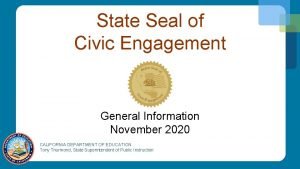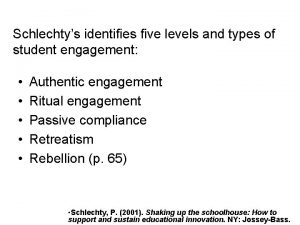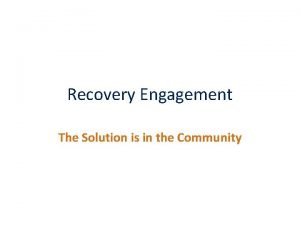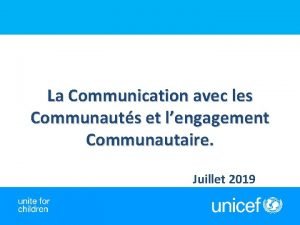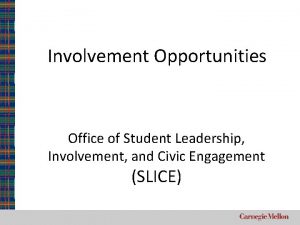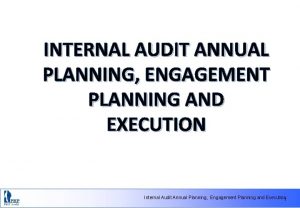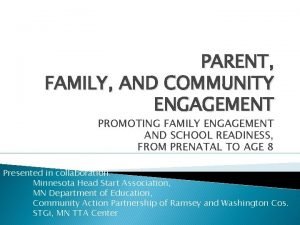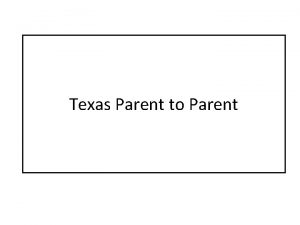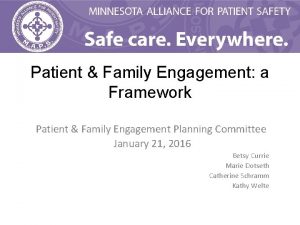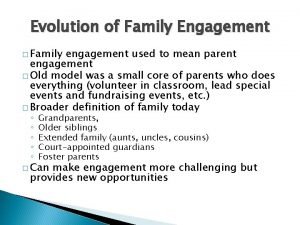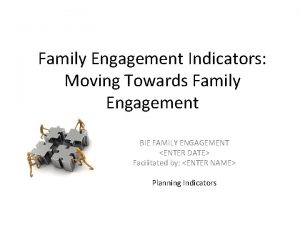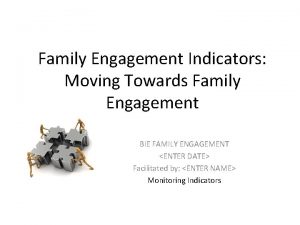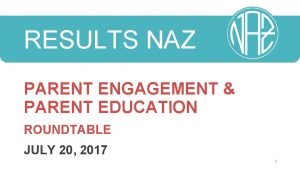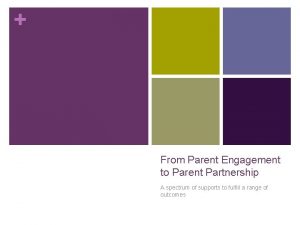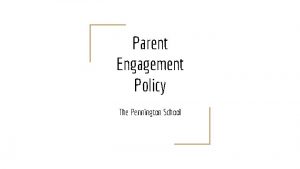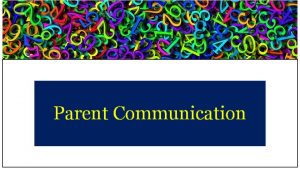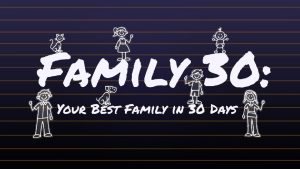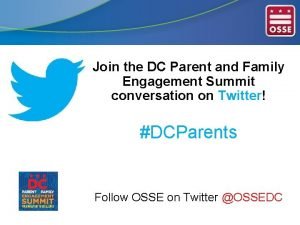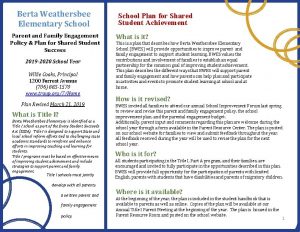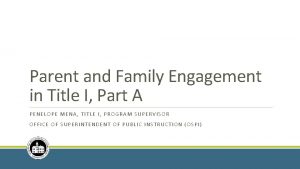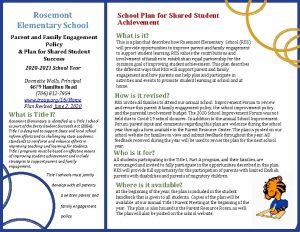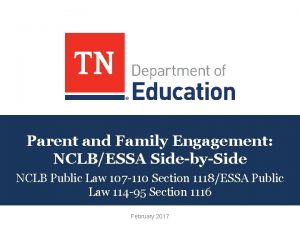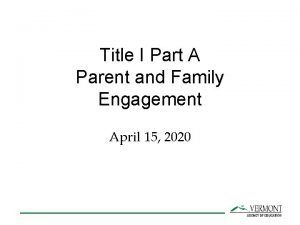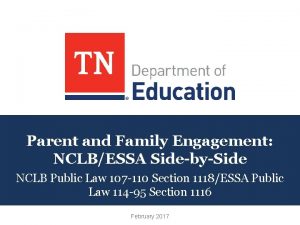We will Go over Parent and Family Engagement










![English Learners & Non-English Households 250000 [VALUE] WA Students 1, 088, 960 200000 150000 English Learners & Non-English Households 250000 [VALUE] WA Students 1, 088, 960 200000 150000](https://slidetodoc.com/presentation_image_h/21584c1e2e43cdd25f8ae1e81a45b491/image-11.jpg)







































- Slides: 50

We will… ü Go over Parent and Family Engagement (PFE) Definition and Research ü Key PFE requirements in Title I, Part A and Learning Assistance Program (LAP) üAnswer questions • In-depth questions will be answered at the end of the presentation, or • Please send questions after the webinar via email or call our office (contact information on last slide) OFFICE OF SUPERINTENDENT OF PUBLIC INSTRUCTION 3/3/2021 1

Parent and Family Engagement DEFINITION AND RESEARCH OFFICE OF SUPERINTENDENT OF PUBLIC INSTRUCTION (OSPI)

What is Parent and Family Engagement? Currently Title I, Part A defines Parental Involvement as. . . the participation of parents in regular, two-way and meaningful communications with school staff that involves the student, addresses learning, and engages the family in school activities. Every Student Succeeds Act (ESSA) has a new term beginning in school year 2017– 18: Parent and Family Engagement. OFFICE OF SUPERINTENDENT OF PUBLIC INSTRUCTION 3/3/2021 3

Involvement vs. Engagement The Latin root of the word “involvement” is “involvere” which means to wrap around, cover or envelop; roll, cause to roll. The Latin root of the word “engagement” is “engare” which means to make a formal agreement, to contract with; to pledge; an obligation to do something. Henderson, A. , & Mapp, L. K. 2016 Family Engagement Harvard Institute in Education Power. Point OFFICE OF SUPERINTENDENT OF PUBLIC INSTRUCTION 3/3/2021 4

Students with Engaged Parents and Families ◦ ◦ ◦ ◦ Exhibit faster rates of literacy acquisition. Have higher grades and test scores. Are promoted and take more challenging classes. Adapt better to school and have better attendance. Have better social skills and behavior. Graduate. Go on to community/technical college or university. OFFICE OF SUPERINTENDENT OF PUBLIC INSTRUCTION 3/3/2021 Henderson, A. , & Mapp, L. K. 2002. A new wave of evidence: The impact of school, family, and community connections on student achievement, annual synthesis 2002. Austin, TX: SEDL. 5

Agents of Change in Parent and Family Engagement Technical vs. Adaptive Challenges OFFICE OF SUPERINTENDENT OF PUBLIC INSTRUCTION 3/3/2021 Heifetz and Linsky 6

U. S. Department of Education’s (ED) Partners in Education, Dual Capacity-Framework Partners in Education: A Dual Capacity. Building Framework for Family–School Partnerships is a publication of SEDL in collaboration with ED. It presents a new framework for designing family engagement initiatives that build capacity among educators and families to partner with one another around student success. Based on existing research and best practices, this report is designed to act as a scaffold for the development of family engagement strategies, policies, and programs. OFFICE OF SUPERINTENDENT OF PUBLIC INSTRUCTION 3/3/2021 7 Authors: Karen L. Mapp, Paul J. Kuttner, Lacy Wood (Production Coordinator), April West (Editor), Shaila Abdullah (Designer)

Communication is the foundation for: q. Sharing information. q. Establishing shared goals for education. q. Setting expectations for learning and behavior. q. Keeping up on classroom activities and home events. q. Helping parents support school instruction. q. Helping teachers understand out of school time. q. Avoiding misunderstandings. OFFICE OF SUPERINTENDENT OF PUBLIC INSTRUCTION 3/3/2021 Webinar for US Department of Education Office of School Turnaround/School Support and Rural Programs, May 21, 2012 8

Key Title I, Part A PFE Provisions Communication in General–The Essentials Other Languages & Parents with Disabilities OFFICE OF SUPERINTENDENT OF PUBLIC INSTRUCTION 3/3/2021 9

WA TITLE I STUDENTS Title I, Part A 34% 367, 587 707, 520 Non-Title 66% 1/3 Total Student Population in WA State 1, 075, 107 OFFICE OF SUPERINTENDENT OF PUBLIC INSTRUCTION 3/3/2021 WA State Report Card and Consolidated State Performance Report Part II 10
![English Learners NonEnglish Households 250000 VALUE WA Students 1 088 960 200000 150000 English Learners & Non-English Households 250000 [VALUE] WA Students 1, 088, 960 200000 150000](https://slidetodoc.com/presentation_image_h/21584c1e2e43cdd25f8ae1e81a45b491/image-11.jpg)
English Learners & Non-English Households 250000 [VALUE] WA Students 1, 088, 960 200000 150000 [VALUE] 19% 100000 10% 50000 0 2015 -16 English Learners OFFICE OF SUPERINTENDENT OF PUBLIC INSTRUCTION 3/3/2021 Non-English Households OSPI Student Information Data Report 2014 -15 and 2015 -16, October 1 enrollment 11

Top 9 Languages in Washington Schools 2014– 15* 2015– 16* Spanish Russian Vietnamese Somali Ukrainian Somali Korean Tagalog Arabic Chinese-Cantonese Chinese OFFICE OF SUPERINTENDENT OF PUBLIC INSTRUCTION 3/3/2021 *OSPI Student Information Data Report 2014– 15 and 2015– 16, October 1 enrollment 12

Interpretation and Translation Requirements, Resources Interpretation and Translation Services Under state and federal law, all parents have the right to information about their child’s education in a language they can understand. Title IV Regulations | Chapter 28 A. 642 RCW | Chapter 392 -190 WAC http: //www. k 12. wa. us/Equity/Interpretation. aspx You will find: ü Parents’ Rights: Interpretation and Translation Services ü Fact Sheet: Information for Limited-English Proficient Parents ü Poster: We can Help you in Your Language! OFFICE OF SUPERINTENDENT OF PUBLIC INSTRUCTION 3/3/2021 13

Communication and Parents with Disabilities Make sure to: Have proper supports and services when needed to give a parent with a disability an equal opportunity to participate…Honor their choice of communication. * * Unless the SEA, LEA, or school can demonstrate that another effective means of communication exists, or that use of the means chosen by the parent would result in a fundamental alteration of the service, program, or activity, or in an undue financial and administrative burden. OFFICE OF SUPERINTENDENT OF PUBLIC INSTRUCTION 3/3/2021 [28 CFR Sections 35. 104 and 35. 160– 164, and Appendix A to Part 35 of Title 28 T of the CFR Implementing Subtitle A of Title II of the Americans with Disabilities Act of 1990] 14

Parent and Family Engagement Title I, Part A and LAP COMPLIANCE, BEST PRACTICES AND RESOURCES

PFE Topics for Today 1. Policy development, notification, and dissemination 2. Technical assistance and coordination 3. Building capacity 4. Evaluating the PFE policy and program 5. School-parent compact 6. Funding and allowable costs 7. OSPI’s Citizen Complaint Process dissemination 8. PFE and Rural Education 9. LAP and PFE 10. Consolidated Program Review (CPR) and PFE Resources OFFICE OF SUPERINTENDENT OF PUBLIC INSTRUCTION 3/3/2021 16

PFE Policy District & School Level q Jointly Developed (parents and staff) q Annual Dissemination OFFICE OF SUPERINTENDENT OF PUBLIC INSTRUCTION 3/3/2021 17

PFE Notifications District & School Level What districts and schools must send out and when (PDF) OFFICE OF SUPERINTENDENT OF PUBLIC INSTRUCTION 3/3/2021 18

PFE Technical Assistance and Coordination District Role Provide coordination, technical assistance, and other support necessary to assist participating schools in the planning and implementing of effective Title I, Part A PFE activities and requirements to improve student academic achievement and school performance. School Role School leadership has a responsibility to: 1. Involve staff in compliance implementation 2. Include staff and parents in the solutions that improve and strengthen family engagement. OFFICE OF SUPERINTENDENT OF PUBLIC INSTRUCTION 3/3/2021 19

PFE Technical Assistance and Coordination Examples District Role–Sample Strategies Provide participating schools with a list of compliance items and templates. OSPI’s Title I, Part A website, under Family Involvement. Conduct site visits to make sure participating schools implement PFE requirements and strategies. Provide trainings at staff meetings or professional development (PD) days regarding: Ø Creating welcoming school environments. Ø Effective two-way communication with families. Ø Involving parents in the homework process. Include in the district level PFE policy the steps the district will take to support schools in planning and implementing these activities. Utilize parents in trainings of school staff as guest speakers, parents as trainers, or part of an open-table discussion or forum on how to increase PFE. If you have a Parent Advisory Committee or Group, ask them to help. These parents should be representative of the Title I, Part A student population. Make sure schools display their school level parent involvement policies so parents can see. Survey staff on the understanding between PFE and student achievement. Use survey results to: Coordinate activities within the participating schools and other state and federal programs to inform parents of the program(s) and activities. Ø Customize webinars, trainings, teaching tip sheets, or other trainings to improve their understanding and abilities to implement effective PFE. OFFICE OF SUPERINTENDENT OF PUBLIC INSTRUCTION 3/3/2021 20

Building Capacity in PFE refers to any effort being made to improve the abilities, skills, and expertise of… Parents and School Staff OFFICE OF SUPERINTENDENT OF PUBLIC INSTRUCTION 3/3/2021 21

Building Capacity in PFE Required Under Title I, Part A Allowable Under Title I, Part A Provide training on: Ø How to monitor a child’s progress. Ø How to work with educators. Involve parents as you develop training for instructional staff, principals, and other educators. Help parents understand state academic standards. Provide literacy training for parents. Hold meetings at different times of the day or at a center location where parents feel familiar with the community. Pay reasonable and necessary expenses associated with PFE activities, such as transportation and child care, to make it possible for parents to participate. Provide PD to staff about PFE related to outreach and communication, and ways to work with parents. Train parents to support the involvement of other parents. Send parents information related to school and parent-focused programs, meetings and other activities; if applicable in a language and format the parent can understand. Schedule in-home conferences between parents, and the teachers and other educators that work directly with their children. Coordinate PFE activities with other programs, such as Migrant and Bilingual, Learning Assistance Program (LAP), state run preschool programs, Special Education, etc. Establish a district or school level parent advisory council to provide advice to parents in Title I, Part A programs. Develop appropriate roles for outside organizations, like businesses and community based, faith-based organizations that support community participation. OFFICE OF SUPERINTENDENT OF PUBLIC INSTRUCTION 3/3/2021 22

Evaluation of the PFE Program and Activities Districts and schools must conduct an annual evaluation of the content and effectiveness of their PFE policy and program. Surveys Forums Focus Groups Staff Families OFFICE OF SUPERINTENDENT OF PUBLIC INSTRUCTION 3/3/2021 23

District Level Evaluation of PFE Tool to Evaluate Your PFE Program Districts have a responsibility to 1) evaluate their PFE policy; and 2) help participating schools create effective PFE programs. The following inventory tool can help gauge the effectiveness and the scope of PFE efforts. If the inventory reveals that efforts are concentrated at one level of the system or in one focus for engagement, staff will know where to direct additional resources and efforts in their future work. Any planning committee or any group exploring PFE may complete this form. Parents should be represented in whatever process is used. District Level PFE–Support Inventory Tool OFFICE OF SUPERINTENDENT OF PUBLIC INSTRUCTION 3/3/2021 24

School Level Evaluation of PFE Efforts Schools must conduct an annual evaluation of the content and effectiveness of the PFE policy and program. The ultimate goal of this yearly evaluation is to improve the quality of Title I, Part A programs and services. Use the findings from these annual evaluations to develop new strategies able to increase the effectiveness of your PFE policy and program. Survey with All Sections A–F English | Cambodian | Chinese | Korean | Punjabi | Russian | Somali | Spanish | Tagalog | Vietnamese Separate sections and other online surveys can be found at School role in Parent and Family Engagement, click on section 7 Evaluate. OFFICE OF SUPERINTENDENT OF PUBLIC INSTRUCTION 3/3/2021 25

School-Parent Compact The compact takes the form of a written agreement that identifies specific activities–shared responsibilities–that parents, school staff, and students will carry out to improve academic achievement. The School-Parent Compact must also outline activities that build productive partnership. Dust Off Your Old School-Parent Compact, Your "New" Tool for Linking Family Engagement to Student Learning–Connecticut Department of Education These video presentations will help district and school staff create a more meaningful grade level, goal oriented school-parent compact that helps children reach the learning goals of state academic standards. OFFICE OF SUPERINTENDENT OF PUBLIC INSTRUCTION 3/3/2021 26

What are Strong Family Ties? Title I, Part A students’ reading and math scores (grades 3– 5) improved by 40– 50 percent when teachers: § met with families face-to-face. § sent materials on ways to help their child at home. § telephoned routinely about progress. (Westat and Policy Studies Associates, 2001) OFFICE OF SUPERINTENDENT OF PUBLIC INSTRUCTION 3/3/2021 27

Title I, Part A PFE Allowable Funding Activities COMPLIANCE, BEST PRACTICES AND RESOURCES

Parents and Title I, Part A PFE Funding Parents must be involved in the decision-making process that impacts PFE policy, programs and activities. Transition year 2016– 17 Title I, Part A allocations of $500, 000 or more: ◦ Must reserve at least one percent to fund PFE activities. ◦ Allocate 95 percent (of that one percent) to schools that receive Title I, Part A funds. Requirement for districts with PFE One Percent Set-Aside-Involve parents in the decision making. One way can be through surveys. Include questions that ask parents directly how they would like the district to fund PFE. See a Sample Survey from the Georgia Department of Education. Title I, Part A allocations of less than $500, 000: ◦ No requirement to reserve a specific amount. ◦ Must implement PFE activities. OFFICE OF SUPERINTENDENT OF PUBLIC INSTRUCTION 3/3/2021 29

PFE Allowable Costs Compliance is Critical Make sure the PFE activities you plan comply with Title I, Part A laws and regulations. The activities allowable under the PFE provisions of Title I, Part A are reasonably broad in scope, but generally linked to education and training, participation in school-related meetings, and inclusion in the education of their children. Gifts and Incentives Are Not Allowable. Do not use state or federal funds to pay for gifts/incentives related to parent engagement programs or activities. Title I, Part A Section 1118 of ESEA and WA State Constitution Article 8, Section 5 and 7. OFFICE OF SUPERINTENDENT OF PUBLIC INSTRUCTION 3/3/2021 30

Things to Consider PFE Allowable Title I, Part A Purchases ü Consumables such as paper, glue, scissors for make and take projects that promote academic learning. ü Instructional kits, workbooks, reading materials. ü Books for loan programs or check out system. Examples PFE Unallowable Title I, Part A Purchases The following items may be donated by others: ü Gifts or items that appear to be gifts. ü Souvenirs, memorabilia, or promotional items, such as T-shirts, caps, tote bags, imprinted pens, and key chains. ü Door prizes, movie tickets, gift certificates, pass to amusement parks, etc. OFFICE OF SUPERINTENDENT OF PUBLIC INSTRUCTION 3/3/2021 31

PFE Allowable Costs–Examples The activities allowable under the PFE provisions of Title I, Part A are reasonably broad in scope, but generally linked to education and training, participation in school related meetings, and inclusion in the education of their children. ü ü ü Transportation and child care costs* Meals/refreshments* Registration and travel costs* Translation and interpretation services* Unavoidable costs related to the facility* Be careful of supplanting! If the district has a district wide initiative to provide any of the service(s) with Basic Ed Funds, then Title I, Part A cannot pay for the expense(s). OFFICE OF SUPERINTENDENT OF PUBLIC INSTRUCTION 3/3/2021 32

PFE and Rural Education BEST PRACTICES AND RESOURCES

PFE in Rural Education (R 2 Ed) Family Engagement in Rural Education-National Center for Research on Rural Education (R 2 Ed) “The importance of family-school partnerships for student success is unequivocal. Given the limited resources evident in many rural communities, family-school partnerships can be especially beneficial for students in rural schools. ” “Decades of research has documented the positive effects of parent participation in children’s academic endeavors for diverse populations (for reviews see Fan & Chen, 2001; Pomerantz, Grolnick, & Price, 2005) and research investigating family-school partnerships specifically in rural communities yields similar results. For example, in a study of high-performing, high-needs rural schools, supportive relationships with families were among the most important factors for rural school success (Barley & Beesley, 2007). ” OFFICE OF SUPERINTENDENT OF PUBLIC INSTRUCTION 3/3/2021 Witte A. L. , & Sheridan, S. M. (2011). Family Engagement in Rural Schools (R 2 Ed Working Paper No. 2011 -2). Retrieved from the National Center for Research on Rural Education website: http: //r 2 ed. unl. edu. 34

Challenges to Family-School Partnerships in Rural Schools § Isolation (Beloin & Peterson, 2000) § Logistical barriers (Weiss & Correa, 1996) § Parent uncertainty and trust (Owens et al. , 2007) § Lack of resources and training (Lowe, 2006; Mc. Bride et al. , 2002; Monk, 2007) Webinar: Family-School Partnerships in Rural Schools: Engaging Families to Promote School Success Webinar for ED Office of School Turnaround/School Support and Rural Programs, May 21, 2012. OFFICE OF SUPERINTENDENT OF PUBLIC INSTRUCTION 3/3/2021 35

PFE in Rural Education–Action Principles For Local Educational Agencies (LEA) 1) Include family-school partnership in mission statements. 2) Create paid positions to promote PFE in rural schools. 3) Identify existing human resources such as translators, parent volunteers, and bus drivers. Train them to promote family-school partnerships that engage all families. 4) Provide training to parents on family-school partnerships. 5) Ensure that the practices of specialists, such as school psychologists, counselors, and social workers, engage families in all direct student services. OFFICE OF SUPERINTENDENT OF PUBLIC INSTRUCTION 3/3/2021 Witte A. L. , & Sheridan, S. M. (2011). Family Engagement in Rural Schools (R 2 Ed Working Paper No. 2011 -2). Retrieved from the National Center for Research on Rural Education website: http: //r 2 ed. unl. edu. 36

PFE in Rural Education–Action Principles For Schools 1) Set high partnership expectations for all families. Identify and evaluate existing biases, as well as existing partnerships. 2) Establish a “family space” within the school, with resources for families, a schedule of events, and open times for parent-parent and parent-teacher interactions. 3) Establish regular, bidirectional communication mechanisms between home and school, such as two-way homeschool notes. 4) Identify ways to extend educational goals through existing events frequented by families, such as athletic events. Eliminate the separation between academics and extracurricular activities. 5) Create a structure for parent-teacher meetings that allows for sharing of information, goals, plans, and solutions for all children, and especially those developing learning or behavioral challenges. OFFICE OF SUPERINTENDENT OF PUBLIC INSTRUCTION 3/3/2021 Witte A. L. , & Sheridan, S. M. (2011). Family Engagement in Rural Schools (R 2 Ed Working Paper No. 2011 -2). Retrieved from the National Center for Research on Rural Education website: http: //r 2 ed. unl. edu. 37

OSPI Citizen Complaint Procedures Districts and/or schools disseminate adequate information about OSPI’s written complaint procedures for resolving issues of violation(s) of a federal statute or regulation that applies to Title I, Part A programs. This information must reach parents of students, and appropriate private school officials or representatives. Chapter 392 -168 WAC, Special Services Programs. Citizen Complaints that Allege Discrimination go to Equity and Civil Rights. OFFICE OF SUPERINTENDENT OF PUBLIC INSTRUCTION 3/3/2021 38

PFE and LAP COMPLIANCE, BEST PRACTICES AND RESOURCES

PFE and LAP If the district uses LAP funds for Parent Engagement Practices Report them in the LAP EDS Report-under Services Family and Community Involvement (SY 15 -16 example below) Menu of Best Practices–Family and Community Practices and Strategies Ø English Language Arts (ELA) Ø Mathematics Ø Behavior OFFICE OF SUPERINTENDENT OF PUBLIC INSTRUCTION 3/3/2021 40

PFE and LAP Allowable Costs LAP is a supplemental program, districts and schools should look at the menu of best practices for guidance on research- based PFE practices. OFFICE OF SUPERINTENDENT OF PUBLIC INSTRUCTION 3/3/2021 41

CPR & PFE Resources

PFE and Consolidated Program Review (CPR) Documentation is essential for compliance with Title I, Part A regulations and will be evaluated during Consolidated Program Review. OFFICE OF SUPERINTENDENT OF PUBLIC INSTRUCTION 3/3/2021 43

PFE Resources OSPI Website Ø PFE in Title I, Part A • District Role • School Role • Guides, Tools, Research OFFICE OF SUPERINTENDENT OF PUBLIC INSTRUCTION 3/3/2021 You will find resources about: ü Communication & Notification ü Policy Development ü Coordination ü Building Capacity ü School-Parent Compact ü Annual Evaluation ü Funding ü Allowable Cost ü Research 44

Family Engagement in Education Harvard School of Education Institute Family Engagement in Education “Participants learned effective ways for schools and families to work together to produce the best academic results for students…” OFFICE OF SUPERINTENDENT OF PUBLIC INSTRUCTION 3/3/2021 45

National Network of Partnership Schools John Hopkins University National Network of Partnership Schools OFFICE OF SUPERINTENDENT OF PUBLIC INSTRUCTION 3/3/2021 “Schools, districts, state departments of education, and organization/university partners are invited to join NNPS to strengthen and continually improve their programs of school, family, and community partnerships. ” www. partnershipschools. org 46

Spotlight on Every Student Succeeds Act (ESSA) KEY CHANGES IN SECTION 1010 OF ESSA-PFE BEGINNING IN SCHOOL YEAR 2017– 18

ESSA and PFE Beginning in School Year 2017– 18 ü The law uses the term “parent and family engagement, ” rather than parental involvement. ü The district must establish expectations and objectives for meaningful PFE in its policy. ü The district must carry out at least one of the following strategies to engage families effectively: PD for school staff, which could include parents; and home-based programs, information dissemination, collaboration with community organizations and other related activities. ü Of the one percent of Title I, Part A funds mandated to fund PFE, the school district now must send 90 percent of these funds directly to the school. In ESEA, it was 95 percent. ü Schools are permitted to establish a parent advisory board that represents families as staff develop and evaluate school policy. OFFICE OF SUPERINTENDENT OF PUBLIC INSTRUCTION 3/3/2021 48

Organizing Schools For Improvement Long-term Study of Chicago Schools When schools have strong family and community ties, their students are: § Four times more likely to make significant gains in reading. § Ten times more likely to make significant gains in math. Anthony S. Bryk et al, (2010) Organizing Schools for Improvement: Lessons from Chicago (Chicago: University of Chicago Press). OFFICE OF SUPERINTENDENT OF PUBLIC INSTRUCTION 3/3/2021 49

Technical Assistance & Questions Title I/LAP and CPR Main Line 360 -725 -6100 Title I, Part A/LAP Program Supervisors Larry Fazzari, 360 -725 -6189 Mary Jo Johnson, 360 -725 -6103 Nate Marciochi 360 -725 -6172 Penelope Mena, 360 -725 -6069 LAP Program Supervisors & Menus of Best Practices Joshua Lynch, Behavior and Research, 360 -725 -4969 | Readiness To Learn | Student Discipline Amy Thierry, ELA and Research, 360 -725 -6026 Kristi Coe, Math and Research, 360 -725 -6190 OFFICE OF SUPERINTENDENT OF PUBLIC INSTRUCTION 3/3/2021 50
 Parent engagement network
Parent engagement network Resident and family engagement
Resident and family engagement Resident and family engagement
Resident and family engagement Blended family advantages and disadvantages
Blended family advantages and disadvantages Single parent family advantages and disadvantages
Single parent family advantages and disadvantages Caep family engagement
Caep family engagement Family engagement images
Family engagement images Siach reciting the word over and over
Siach reciting the word over and over Explain how to handing over and taking over the watch
Explain how to handing over and taking over the watch Blended family vs binuclear
Blended family vs binuclear Tartarus family tree
Tartarus family tree Over the mountain over the plains
Over the mountain over the plains Conjugal family
Conjugal family Periodic table staircase
Periodic table staircase Marketing chapter 1
Marketing chapter 1 Domain 6: community linkages explanation
Domain 6: community linkages explanation Adot - business engagement and compliance (beco)
Adot - business engagement and compliance (beco) Action planning for employee engagement
Action planning for employee engagement Develop new approaches to public governance and engagement
Develop new approaches to public governance and engagement Canadian model of occupational performance and engagement
Canadian model of occupational performance and engagement Employee engagement survey action plan ppt
Employee engagement survey action plan ppt Youth engagement and progression framework
Youth engagement and progression framework Seas statement of support examples
Seas statement of support examples Soil characteristic
Soil characteristic Parents functions
Parents functions Lesson 2-7 parent functions and transformations
Lesson 2-7 parent functions and transformations Unit 4 linear equations
Unit 4 linear equations Describe the transformation from the parent function
Describe the transformation from the parent function Parent functions and transformations
Parent functions and transformations Physical property of ammonia
Physical property of ammonia Pullman hotels and resorts parent organization
Pullman hotels and resorts parent organization Hadamard basis
Hadamard basis Reciprocal function
Reciprocal function Utrgv engagement zone
Utrgv engagement zone Lucy makinson
Lucy makinson Employee engagement programs examples
Employee engagement programs examples Engagement activities for virtual meetings
Engagement activities for virtual meetings Ted's flight from amsterdam took more than
Ted's flight from amsterdam took more than Taskstream tools of engagement
Taskstream tools of engagement Brigada eskwela program of activities
Brigada eskwela program of activities California state seal of civic engagement
California state seal of civic engagement Iso stakeholder engagement
Iso stakeholder engagement Schlechty's levels of engagement
Schlechty's levels of engagement Recovery engagement center bloomington in
Recovery engagement center bloomington in Philosophical chairs
Philosophical chairs What does nic mean in nursing
What does nic mean in nursing Business partner engagement model
Business partner engagement model Engagement communautaire et redevabilité
Engagement communautaire et redevabilité Engagement options
Engagement options Math ia rubric
Math ia rubric Ceavop assertions
Ceavop assertions
